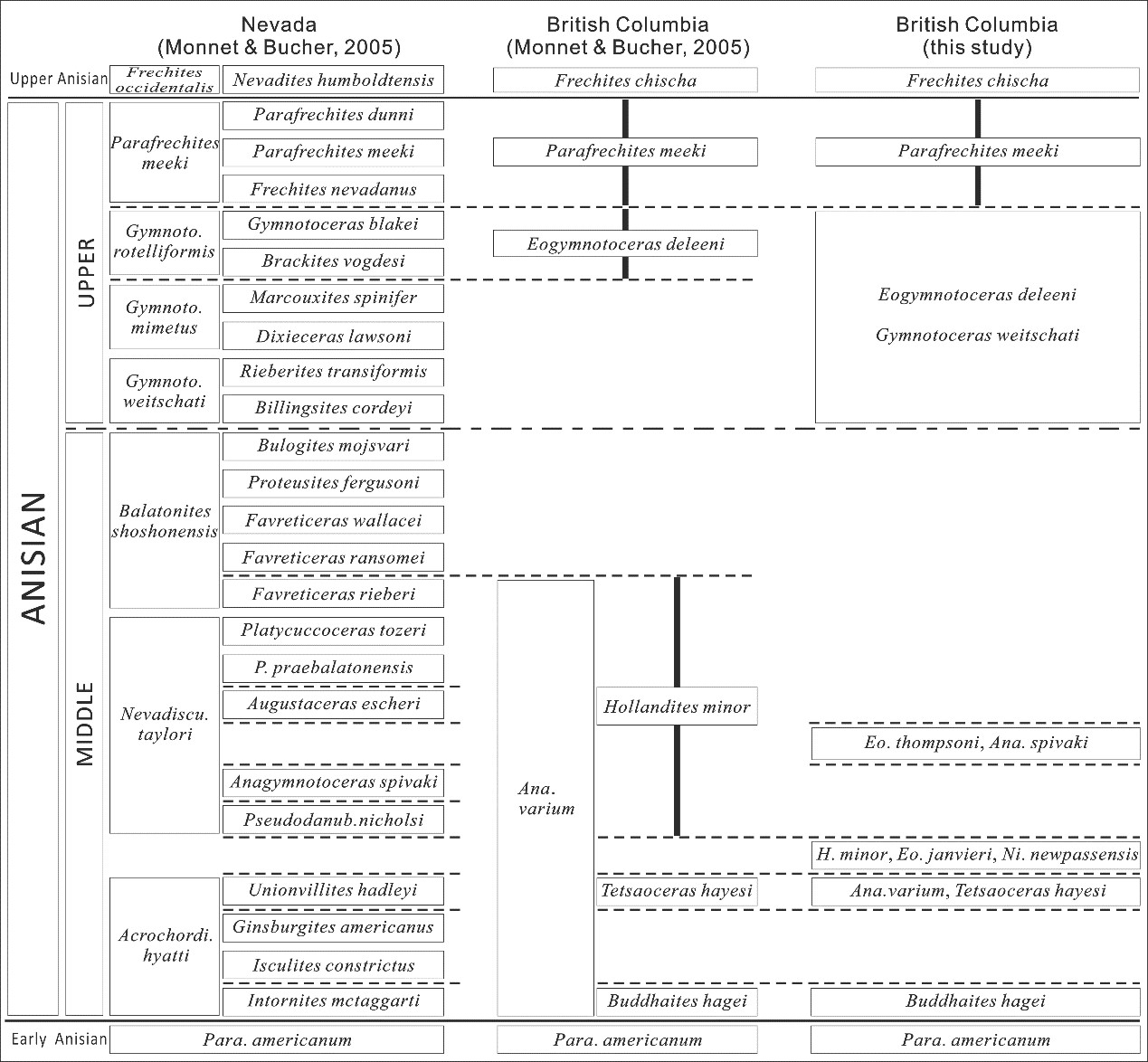Canada has an extensive record of Triassic marine sediments documenting abundant ammonoid faunas of mid and high palaeolatitudes, ranging from Griesbachian to late Rhaetian. Along with the material from Nevada (low palaeolatitude), British Columbia provides an excellent example for discussions on ammonoid palaeogeography and latitudinal gradient of taxonomic richness.

Some Anisian ammonoids reported from British Columbia for the first time
Recently, Dr. JI Cheng from Nanjing Institute of Geology and Palaeontology, Chinese Academy of Sciences and colleague from Switzerland reported new material of Anisian (Middle Triassic) ammonoids from British Columbia based on populatioanl approach and recognized six species which were only found in Nevada before.
The occurrence of low-palaeolatitude restricted species in BC indicates that exchanges between low- and mid-palaeolatitude regions were actually more significant than previously documented. Moderate levels of exchange existed not only during middle Anisian but also during the late Anisian. The new material largely improved the correlation of ammonoid unitary association zones between the two regions.
These revised biochronological correlations indicate that BC biochronozones were not necessarily of larger duration than those from Nevada. Along with increasing sampling efforts, BC biochronozones tend either to be exact correlative of Nevada zones, or to intercalate between them. Therefore, the common view that geographically differentiated evolutionary rates originates from the latitudinal gradient of taxonomic richness does not hold for Anisian ammonoid faunas along the Palaeopacific margin of North America. The relative lower diversity of ammonoid in higher latitude is most likely due to the low carbonate content, instead of different origination and extinction rates.

Middle and upper Anisian revised ammonoid zonation of north-eastern British Columbia
This research has recently been online published in Papers in Palaeontology.
Paper information: Cheng Ji and Hugo Bucher. 2018. Anisian (Middle Triassic) ammonoids from British Columbia (Canada): biochronological and palaeobiogeographical implications.Papers in Palaeontology.
